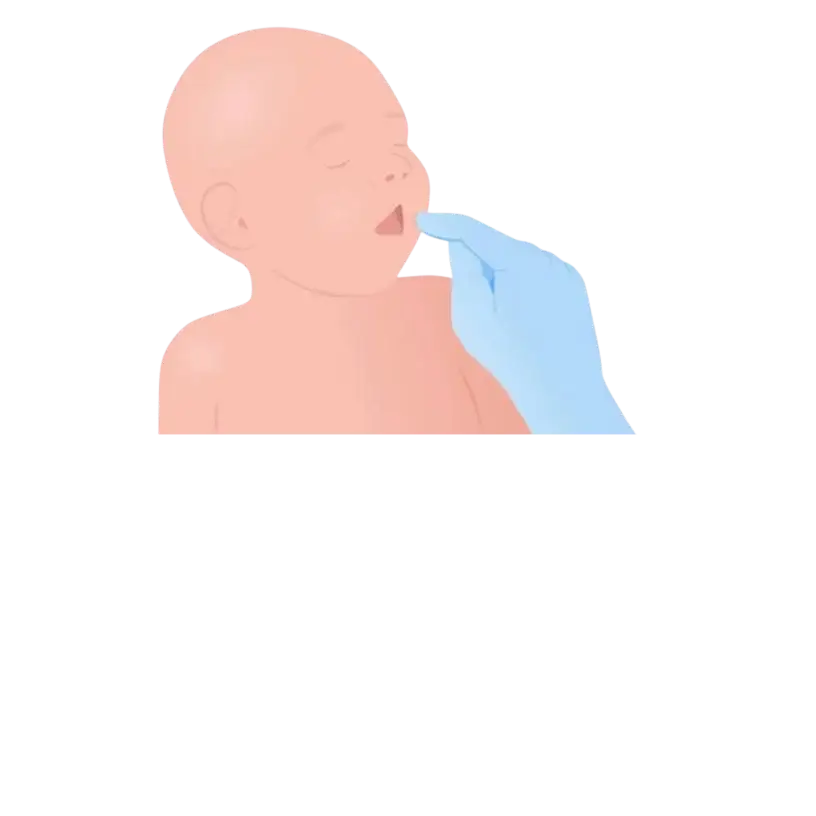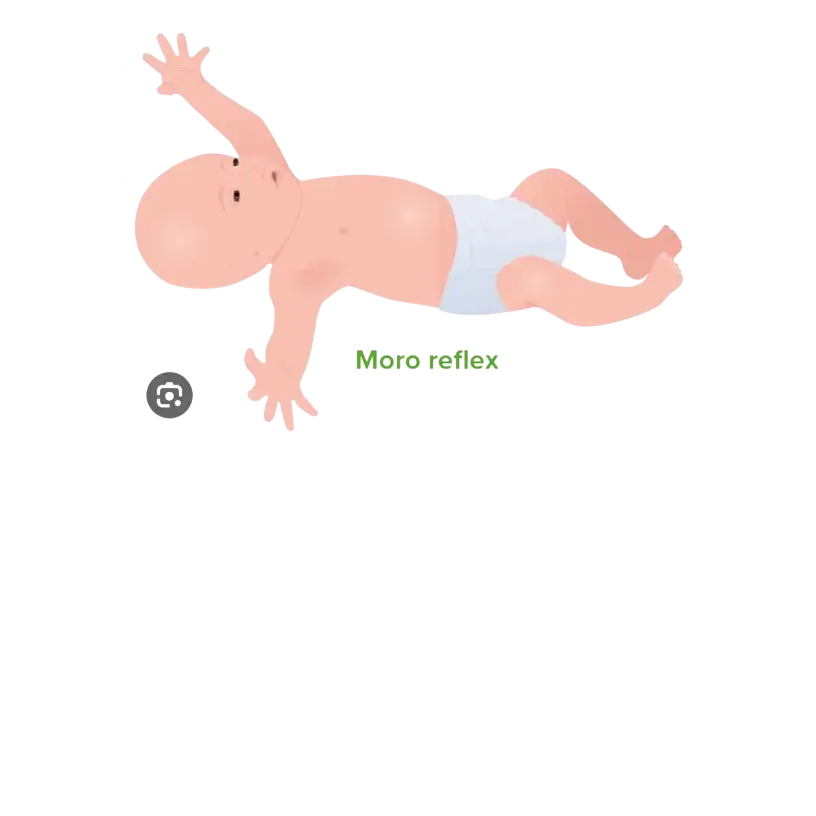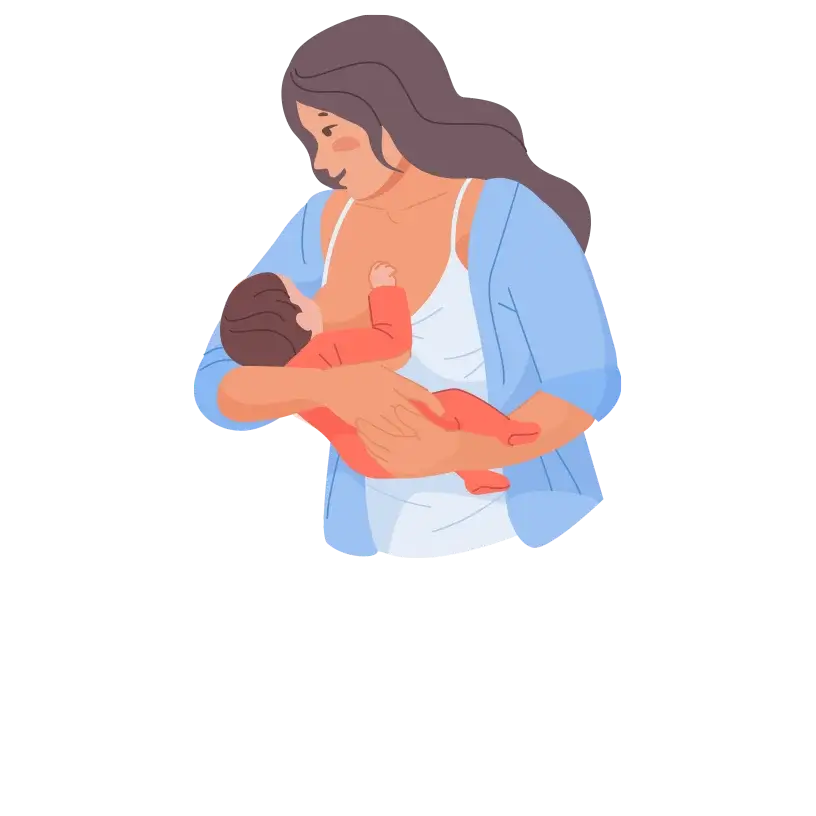Menu

Congratulations on the arrival of your bundle of joy; it’s completely normal to feel a rollercoaster of emotions once you bring your baby home. Around three days after birth, when your milk comes in, you might experience what’s known as the baby blues. This is when your hormones fluctuate, making you feel tearful, irritable, and utterly exhausted, even though you’re thrilled about your new baby. It’s like a whirlwind of emotions, but it’s important to know that feeling this way is okay.
You’ve just gone through the incredible journey of childbirth and welcomed new life into the world, so feeling a little out of balance is completely normal. Give yourself some grace and know that these feelings are temporary and part of the adjustment period of becoming a parent.
Your 1-week-old might look slightly different right after birth, but don’t worry; it’s all normal. If you had a vaginal birth, their head might seem a bit misshapen or pointy, often referred to as conehead, but it’ll round out in a week or two. They might also have swollen genitals and breasts, which are just from hormones passed on from you before birth.
Their skin might look reddish-purple initially, but it’ll turn pinkish-red soon. And don’t be alarmed if their hands and feet look a bit blue – it’s because their circulation is still developing. Also, their skin might be lighter than it will be later on, but it’ll darken to its natural colour within a few weeks or even a few years for darker-skinned babies.
Since they were all curled up in your belly until recently, they might seem scrunched with their arms and legs not fully stretched out. But don’t worry; they’ll stretch out more as time passes. Everything you see is part of their adjustment to life outside the womb.
According to the Academy of American Pediatrics (AAP), it’s common for newborns to lose up to 10% of their birth weight after birth. However, they typically begin to regain this weight by the time they are 10 to 14 days old.
A one-week-old can weigh anywhere from 5.5 pounds to 10 pounds, and this range is considered normal. Typically, boys are a bit heavier than girls, and if you and your partner are on the larger side, your baby might be, too. So, there’s no one-size-fits-all answer. Just focus on your baby’s health and growth and trust that they’ll find their own place within this range.
On average, baby boys typically weigh about 7 pounds and 4 ounces and measure around 19 3/4 inches long. Meanwhile, baby girls usually weigh about 7 pounds and 1 ounce and have an average length of approximately 19 1/4 inches.
Parents of 1-week-old babies often stress about feeding—wondering if their baby is eating enough, how often to feed, and if it’s possible to overfeed. High expectations are common, but remember, you and your baby are learning together. Just like you’re figuring out how to feed your baby, they’re also learning how to eat.
Breastfeeding can be difficult initially, with challenges like latching and finding a comfortable position for your baby at the breast. You might also worry about whether your baby is getting enough milk. In the first few days after birth, you’ll produce colostrum—a small amount of yellowish fluid packed with essential nutrition and immunity for your baby.
When formula feeding your newborn, they’ll typically consume around 1 to 2 ounces of formula every 3 to 4 hours. As the first week progresses, you can gradually increase the amount to 2 to 4 ounces per feeding. This adjustment allows your baby to gradually meet their growing nutritional needs while ensuring they don’t overfeed or experience discomfort.
Cluster feeding is common among breastfed babies. They consume smaller meals more frequently throughout the day, typically 8-12 times within 24 hours.
At this age, it’s important to feed your baby on demand, meaning you feed them whenever they show signs of hunger, such as:
1-week-old babies haven’t developed a sense of day and night yet, so they sleep whenever they’re tired, whether day or night. Since their stomachs are small and can’t hold much milk, they wake up often to feed, regardless of the time. It might feel exhausting, but it’s normal and part of their early development.
According to Stanford medicine, newborns sleep for around 16 hours within 24 hours, approximately 8 hours at night and 8 hours during the day. However, anywhere between 14 to 17 hours is considered normal. Despite the seeming amount of sleep, it’s important to note that newborns do not sleep in the longer stretches that adults do.
Your baby’s naps can vary widely. Sometimes, they’ll only nap for 20 to 30 minutes, while others might sleep for a few hours straight. It can change from day to day, which can leave you feeling sleep-deprived.
At this stage, your baby’s sleep patterns might feel unpredictable, but swaddling can help them feel snug and secure, possibly leading to longer stretches of sleep. As your baby grows, they’ll develop more consistent feeding and sleeping routines. In the meantime, focus on establishing a feeding schedule and taking naps whenever you can.
According to AAP, It’s crucial to prioritise safe sleep practices to reduce the risk of SIDS or suffocation. Always place your baby on their back to sleep, keep them in the same room as you but not in your bed, use a firm mattress with no loose bedding, avoid letting them sleep in sitting devices for too long, and dress them appropriately to avoid overheating.
If your baby’s skin appears yellowish, it could signify jaundice. This happens when their liver isn’t fully developed to remove a yellow pigment called bilirubin from their blood.
Jaundice typically starts on the face and then moves to the chest and abdomen before spreading to the arms and legs. Sometimes, the whites of the eyes may also turn yellow. If you observe jaundice in your baby, it’s important to contact the doctor for further evaluation and guidance.
Fevers can happen to most babies at some point, but it’s sometimes tricky to spot in newborns. During the first 12 weeks, if your baby feels warm or seems unusually fussy, it’s crucial to check their temperature using a rectal thermometer. If their temperature reads 102 F (38.9 C) or higher, seeking immediate medical attention is important. This ensures prompt evaluation and appropriate care if needed.
When your baby experiences colic, they’ll cry intensely and fuss for extended periods, often without a clear reason. This can be tough for you, especially since soothing techniques may not provide much relief. Colic episodes often happen in the evening, adding to the exhaustion you already feel.
In the first few days after birth, your baby’s poop will be thick and dark green, which is normal. This is called meconium, and it’s made up of stuff your baby ingested while they were in the womb. As your baby starts feeding, their poop will gradually turn yellowish.
Your baby might have quite a few poopy diapers every day – up to 8 to 12! But even if they only have one, that’s usually okay. If you’re breastfeeding, their poop might look softer, similar to diarrhoea.
At 1-week-old, your baby won’t be crawling or exploring yet, so you don’t need to babyproof extensively. However, preparing your home to ensure your baby’s safety is essential. Keep your home at a moderate temperature, and ensure you have installed functioning carbon monoxide and smoke detectors.
Additionally, ensure your baby’s crib or bassinet is assembled correctly and away from hazards such as unharnessed furniture, windows, cords, or hot surfaces. While your baby may not be mobile yet, taking these precautions early on sets the foundation for a safe environment as they grow and become more active.

When you touch your baby’s cheek, lips, or mouth, they will turn their head toward the stimulus and open their mouth, instinctively searching for a source of food. This reflex helps your baby find your breast and learn how to eat.

When your baby hears a loud noise or experiences a sudden movement, they may automatically arch their back, extend their arms and legs, and possibly cry out. This reflex helps protect them from potential danger. It’s normal for newborns to have this reflex, but it usually goes away when they’re three to six months old.

Your baby will start sucking on anything placed in their mouth, including your nipple or a pacifier. This reflex helps them feed and is crucial for breastfeeding success. It may take some practice for your baby to master the technique of drawing out milk, swallowing it while breathing, and staying latched to your breast.

When you touch your baby’s palm, the baby automatically curls its fingers around your finger or an object. This involuntary reflex helps the baby grasp things for support.

Babies have an instinct to suck for comfort. A pacifier can help calm your baby when breastfeeding is not an option. However, it’s best to wait until breastfeeding is established before introducing a pacifier.

Your baby may have blurry vision and can see best when objects are 10 inches or closer to their face. They are drawn to faces and gestures, so interacting with your baby up close can stimulate their developing vision.

When you touch your baby’s cheek, lips, or mouth, they will turn their head toward the stimulus and open their mouth, instinctively searching for a source of food. This reflex helps your baby find your breast and learn how to eat.

When your baby hears a loud noise or experiences a sudden movement, they may automatically arch their back, extend their arms and legs, and possibly cry out. This reflex helps protect them from potential danger. It’s normal for newborns to have this reflex, but it usually goes away when they’re three to six months old.

Your baby will start sucking on anything placed in their mouth, including your nipple or a pacifier. This reflex helps them feed and is crucial for breastfeeding success. It may take some practice for your baby to master the technique of drawing out milk, swallowing it while breathing, and staying latched to your breast.

When you touch your baby’s palm, the baby automatically curls its fingers around your finger or an object. This involuntary reflex helps the baby grasp things for support.

Babies have an instinct to suck for comfort. A pacifier can help calm your baby when breastfeeding is not an option. However, it’s best to wait until breastfeeding is established before introducing a pacifier.

Your baby may have blurry vision and can see best when objects are 10 inches or closer to their face. They are drawn to faces and gestures, so interacting with your baby up close can stimulate their developing vision.
Skin-to-skin contact: This involves holding your baby against your bare chest, which encourages bonding, regulates body temperature, stabilises heart rate and breathing, promotes breastfeeding, and reduces stress. It’s good to practise this “kangaroo care” right after your baby is born and during their first few months.
Tummy time: Encouraging your baby to spend time on their tummy helps strengthen their neck muscles, which is essential for later developmental milestones like rolling over, sitting up, and crawling. Starting a tummy early can also prevent flat spots on the head and promote healthy development.
Gentle Massage: This involves softly stroking your baby’s body with gentle, soothing movements. This activity can help relax your baby, relieve tension, improve circulation, and promote better sleep.
Face-to-face time: Babies love looking at faces, especially when you smile and make funny faces. Spend time making eye contact, smiling, and playing with your baby. Pay attention to what they like and have fun together!
Umbilical cord care: In the past, it was advised to clean your baby’s umbilical cord stump with alcohol. However, the American Academy of Pediatrics (AAP) now recommends leaving it alone and allowing it to heal naturally until it falls off, typically within about a week.
A circumcised penis: The best rule of newborn circumcision care is to gently clean the area and wipe away any bits of poop you may see at every diaper change. Use warm water and gauze and let it air dry, which will help prevent irritation.
Normal signs such as redness and yellow secretion in the first week are expected. Still, excessive swelling, crusty sores, or cloudy fluid secretion should prompt you to contact your baby’s healthcare provider. Avoid irritating the area and monitor for discomfort, ensuring your baby’s circumcision heals properly.
Bathing: Bathing your baby once a week is sufficient, emphasising that doing so is unnecessary daily. However, if your baby has been unwell or has had a particularly soiled diaper, you can give them a sponge bath. Keeping the umbilical cord stump clean and dry is important, as well as avoiding submerging it in water until it naturally falls off.
Diaper changes: When changing your baby’s diaper, ensure you have all necessary supplies nearby. Always keep one hand on your baby and never leave them unattended on a changing table or any elevated surface. Promptly remove wet or soiled diapers to prevent diaper rash. Use gentle wipes to clean the area, then replace it with a fresh diaper.
It’s normal for babies to have swelling, bruises, or bloodshot eyes on their heads shortly after birth. These marks are often caused by the pressure and squeezing during delivery, especially if forceps or ventouse were used. While they may look concerning, they typically fade away on their own. Discussing it with your midwife for reassurance is always okay if you’re concerned.
It’s common for babies to have swollen breasts and even ooze a little milk, regardless of whether they are boys or girls. Additionally, their genitals may appear swollen initially but usually look normal within a few weeks.
Baby girls may also have a bit of bleeding or discharge from the vagina, which is normal. These changes are all caused by hormones passed from the mother to the baby before birth, so there’s no need to worry.
For boys, their testicles develop inside their body and may take some time to descend into the scrotum. A healthcare professional will check this during the newborn physical examination to ensure everything is developing as expected.
Most babies often have small pink or red V-shaped marks on their forehead, upper eyelids, or neck, commonly called stork marks or salmon patches. These marks gradually fade over a few months. Additionally, dark red, slightly raised strawberry marks known as infantile hemangiomas may appear a few days after birth and typically enlarge before gradually fading away.
At the top of your baby’s head, there’s a diamond-shaped patch where the skull bones haven’t fused, called the anterior fontanelle. Another smaller soft spot is located towards the back of their head. These fontanelles typically take about a year or more to close, but their protective membrane protects them, so there’s no need for concern.
When your baby is born, their skin is very delicate and easily prone to damage. Over the first month, their skin matures and develops its protective barrier. The white, sticky substance called vernix, which covers their skin in the womb, should be left on as it acts as a natural moisturiser and protects against infection.
For the first month, it’s best to bathe your baby with plain water and avoid using cleansers, lotions, or medicated wipes. If your baby is premature, their skin is even more delicate, and the neonatal staff will guide skincare.
It’s normal for babies to have swelling, bruises, or bloodshot eyes on their heads shortly after birth. These marks are often caused by the pressure and squeezing during delivery, especially if forceps or ventouse were used. While they may look concerning, they typically fade away on their own. Discussing it with your midwife for reassurance is always okay if you’re concerned.
It’s common for babies to have swollen breasts and even ooze a little milk, regardless of whether they are boys or girls. Additionally, their genitals may appear swollen initially but usually look normal within a few weeks.
Baby girls may also have a bit of bleeding or discharge from the vagina, which is normal. These changes are all caused by hormones passed from the mother to the baby before birth, so there’s no need to worry.
For boys, their testicles develop inside their body and may take some time to descend into the scrotum. A healthcare professional will check this during the newborn physical examination to ensure everything is developing as expected.
Most babies often have small pink or red V-shaped marks on their forehead, upper eyelids, or neck, commonly called stork marks or salmon patches. These marks gradually fade over a few months. Additionally, dark red, slightly raised strawberry marks known as infantile hemangiomas may appear a few days after birth and typically enlarge before gradually fading away.
At the top of your baby’s head, there’s a diamond-shaped patch where the skull bones haven’t fused, called the anterior fontanelle. Another smaller soft spot is located towards the back of their head. These fontanelles typically take about a year or more to close, but their protective membrane protects them, so there’s no need for concern.
When your baby is born, their skin is very delicate and easily prone to damage. Over the first month, their skin matures and develops its protective barrier. The white, sticky substance called vernix, which covers their skin in the womb, should be left on as it acts as a natural moisturiser and protects against infection.
For the first month, it’s best to bathe your baby with plain water and avoid using cleansers, lotions, or medicated wipes. If your baby is premature, their skin is even more delicate, and the neonatal staff will guide skincare.
The American Academy of Pediatrics (AAP) suggests that breastfed babies should receive 400 IU (International Units) of vitamin D supplementation daily. This can be given in liquid form, usually as a drop. It’s important to note that breast milk alone may not provide enough vitamin D for your baby.
Additionally, it’s advised not to give babies water or solid foods at this stage, as they obtain all the necessary calories and nutrients from breast milk or formula.
It’s normal for 1-week-old babies to cry a lot. They might cry because they want reassurance, are hungry or tired, have a wet or soiled nappy, or feel too hot or cold. You can try feeding them, changing their nappy, holding them skin to skin, cuddling or rocking, speaking or singing in a soothing voice, giving them a warm, relaxing bath, or putting them down to sleep to comfort them.
Remember, comforting your baby helps them feel safe and secure during this stage.
At one week old, your baby’s vision is still developing, so they can see best at a distance of about 8 to 12 inches. This is about the distance from their face to yours while feeding. Babies generally hold their gaze for only a few seconds.They prefer high-contrast patterns and can distinguish between light and dark.
At one week old, your baby’s poop can vary in colour, but it’s typically a greenish-black colour due to meconium, a substance made up of materials ingested while in the womb. As your baby starts feeding, their poop will transition to a yellowish colour.
However, colour variations can occur depending on your baby’s diet, whether you’re breastfeeding or the formula they’re consuming. If you notice any significant changes in colour or consistency, it’s a good idea to consult your healthcare provider.
Your baby’s eyes may appear sticky because the tear ducts in newborns are usually narrower and allow accumulated tears to block them, making them look sticky when they dry. If this isn’t excessive, it is a normal issue, and you can clean your baby’s eyes softly with cotton wool and water that has been sterilised by boiling and then allowing it to cool.
Ensure your hands are clean, and use a new piece of cotton wool for each eye to prevent infection. If the discharge is excessive or becomes yellow/green, or your baby’s eyes look red or swollen, contact your health care professional.
The American Academy of Pediatrics (AAP) suggests that breastfed babies should receive 400 IU (International Units) of vitamin D supplementation daily. This can be given in liquid form, usually as a drop. It’s important to note that breast milk alone may not provide enough vitamin D for your baby.
Additionally, it’s advised not to give babies water or solid foods at this stage, as they obtain all the necessary calories and nutrients from breast milk or formula.
It’s normal for 1-week-old babies to cry a lot. They might cry because they want reassurance, are hungry or tired, have a wet or soiled nappy, or feel too hot or cold. You can try feeding them, changing their nappy, holding them skin to skin, cuddling or rocking, speaking or singing in a soothing voice, giving them a warm, relaxing bath, or putting them down to sleep to comfort them.
Remember, comforting your baby helps them feel safe and secure during this stage.
At one week old, your baby’s vision is still developing, so they can see best at a distance of about 8 to 12 inches. This is about the distance from their face to yours while feeding. Babies generally hold their gaze for only a few seconds.They prefer high-contrast patterns and can distinguish between light and dark.
At one week old, your baby’s poop can vary in colour, but it’s typically a greenish-black colour due to meconium, a substance made up of materials ingested while in the womb. As your baby starts feeding, their poop will transition to a yellowish colour.
However, colour variations can occur depending on your baby’s diet, whether you’re breastfeeding or the formula they’re consuming. If you notice any significant changes in colour or consistency, it’s a good idea to consult your healthcare provider.
Your baby’s eyes may appear sticky because the tear ducts in newborns are usually narrower and allow accumulated tears to block them, making them look sticky when they dry. If this isn’t excessive, it is a normal issue, and you can clean your baby’s eyes softly with cotton wool and water that has been sterilised by boiling and then allowing it to cool.
Ensure your hands are clean, and use a new piece of cotton wool for each eye to prevent infection. If the discharge is excessive or becomes yellow/green, or your baby’s eyes look red or swollen, contact your health care professional.
1. AAP: How to Keep Your Sleeping Baby Safe: AAP Policy Explained
2. Better Health: Children’s Feet and Shoes
3. AAP Publications: Weight Change Nomograms for the First Month After Birth
4. AAP Publications: Umbilical Cord Care in the Newborn Infant
5. Centres for Disease Control and Prevention: Data Table of Infant Weight-for-age Charts
6. Cleveland: Fever
7. Healthy Children: Amount and Schedule for Baby Formula Feedings
8. Healthy Children: Colostrum: Your Baby’s First Meal
9. Healthy Children: How Often to Breastfeed
10. Healthy Children: Vitamin D for Babies, Children & Adolescent
11. Healthy Children: Your Newborn’s First Week: How to Prepare and What to Expect
12. March of Dimes: Newborn Jaundice
13. NHS: Your newborn baby
14. Stanford Children’s Health: Infant Sleep
15. University of Michigan Health: Physical Growth in Newborn
© Mindsmaking 2024